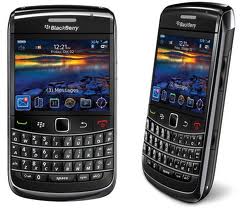BlackBerry users in the entire world continue to have disruptions in service for a third consecutive day North American subscribers seem to be affected as well.
All those who use Customers using Research In Motion’s BlackBerry smartphones in Europe, the Middle East, and Africa had troubles accessing the e-mail, using messaging and Web surfing on Monday. On Tuesday things got better with only spotty access to e-mail, BlackBerry Messenger, and Web.
At the beginning the problems affected just the BlackBerry users from Europe, the Middle East, Africa and India. However, the problems spread to other parts of the globe including parts of South America.
On Wednesday morning subscribers in the U.S.A. and Canada started to complain about delayed e-mails, as well as email sent in groups.
Earlier RIM put the blame on the disruption to service that affected Europe, the Mideast, India, Latin America and Africa on a failed switch and backup. The company confirmed the problem had been solved, however, it might take some time to work through the backlog of data, which had not yet been sent to subscribers’ devices. Late on Tuesday E-mail started to trickle in for some subscribers.
“Although the system is designed to failover to a backup switch, the failover did not function as previously tested,” the company explained in a statement on Tuesday. “As a result, a large backlog of data was generated and we are now working to clear that backlog and restore normal service as quickly as possible. We apologize for any inconvenience and we will continue to keep you informed.”
It’s not very clear, just yet, if the issues plaguing customers overseas is what’s affecting the service in North America. One of the RIM representative was not available for comment in regards to disruptions in the North America.
RIM’s BlackBerry network architecture is its strength as well as its biggest weakness. Unlike other smartphone platforms, RIM routes all e-mail and messaging traffic through its BlackBerry servers in network operation centers throughout the world. This centralized architecture for the service means that additional encryption and security can be added to the messages that traverse the network. And for many corporate customers, this added security is the main reason they use the service.
But the architecture also means there are single points of failure throughout the network. This means that when there is a major infrastructure disruption, it can affect entire regions of service, potentially knocking out service for tens of millions of customers. By contrast competing smartphones, such as the iPhone and Google Android devices, do not suffer from the same types of outages because there is no single point of failure in the network.

